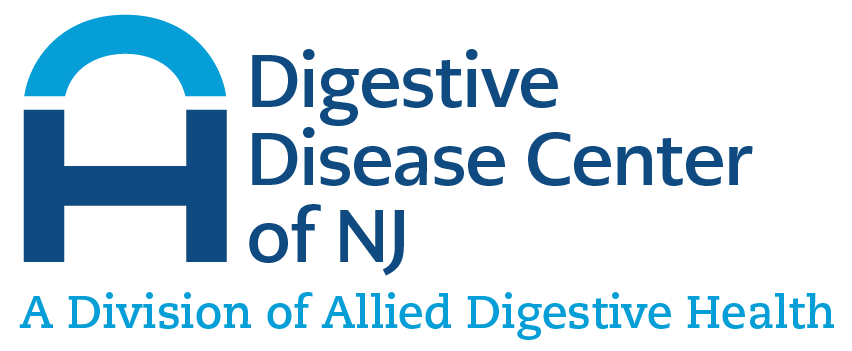What is Gallbladder Disease?
Underneath your liver is a small sac known as the gallbladder. The gallbladder’s function is to store bile produced by the liver and then pass it along to the small intestine via the bile ducts. Bile is important for digestion because it helps break down fats in the small intestine. There are many different types of gallbladder diseases, but the most common is cholecystitis, which is gallbladder inflammation. Patients often develop cholecystitis due to gallstones blocking the entrance to the bile ducts, causing bile buildup. All gallbladder diseases should be evaluated by a medical professional for treatment, however, gallbladder disease varies widely in severity.
What Are the Types of Gallbladder Disease?
Many different types of gallbladder disorders fall under the umbrella of gallbladder disease, from gallstones to gallbladder cancer. Symptoms can be similar, however, treatment depends upon the type of gallbladder disease and how serious it is. Some of the types of gallbladder disease include:
- Gallstones. Gallstones are very common and can cause cholecystitis, the most common gallbladder disease.. Gallstones form when bile salts, calcium, and cholesterol interact, forming hard particles that block the bile ducts. Bilirubin can also contribute to gallstones. Gallstones can be as small as a particle of sand, or as large as a golf ball. Risk factors for gallstones include:
- Family history of gallstones
- Being female
- Having diabetes
- Having liver disease or cirrhosis
- Having Crohn’s disease or other malabsorption disorders
- Being obese or overweight
- Being over age 60
- Cholecystitis. The term cholecystitis refers to inflammation of the gallbladder. Most often, it is the result of gallstones, but tumors and other conditions can cause cholecystitis as well. Cholecystitis can either be acute (sudden, but only one episode) or chronic, which means that the patient has had multiple instances of cholecystitis. Typically, once gallstones pass, the pain for acute cholecystitis subsides; however, in chronic cholecystitis, surgery is the most effective treatment.
- Choledocholithiasis. Choledocholithiasis occurs when gallstones become lodged in the bile ducts. Because of the blockage, bile cannot exit and backs up into the liver Symptoms include pale-colored stools, jaundice, abdominal pain, fever, and vomiting.
- Biliary dyskinesia. This condition denotes a poorly functioning gallbladder and is not caused by gallstones. If you feel nausea and abdominal pain after eating along with other GI upset, it could be biliary dyskinesia.
- Gangrene of the gallbladder. This is a serious condition that can occur when cholecystitis is left untreated. Those who are 45 and over and diabetic are at the greatest risk. Symptoms include dull pain near the gallbladder, low blood pressure, disorientation, and fever.
- Gallbladder abscess. If the inflammation of your gallbladder is pus-filled, it is considered an abscess. Most often, patients have white blood cells, pain, and fever.
- Sclerosing cholangitis. This condition occurs when there is scarring of the bile duct, but the cause of sclerosing cholangitis in most cases is unknown. Many people do not have symptoms, but if they do, they experience jaundice (yellowing of the skin and eyes), fever, and abdominal discomfort. Sclerosing cholangitis also increases the risk of liver cancer and is very common in those who have an ulcerative colitis diagnosis. The only treatment to eradicate sclerosing cholangitis is a liver transplant, however, doctors can manage symptoms through medication.
- Acalculous gallbladder disease. This is gallbladder inflammation not caused by gallstones. Autoimmune disorders such as lupus and having recent digestive surgeries are two top risk factors for developing acalculous gallbladder disease.
- Gallbladder polyps. Polyps are growths that can form in the gallbladder. Typically, they are not accompanied with symptoms, however, if the polyp is larger than 1 centimeter, surgery is often recommended as polyps can develop into gallbladder cancer.
- Gallbladder cancer. Gallbladder cancer is rare and is more common in those who have had gallstones. Like other cancers, gallbladder cancer can spread to the surrounding organs, however, it is difficult to diagnose in its early stages as there are no symptoms.
How Is Gallbladder Disease Diagnosed?
If gallbladder disease is suspected, your gastroenterologist will take a detailed medical history and provide a physical exam. You may be asked to perform a simple maneuver known as “Murphy’s sign.” To do so, your doctor places their hand where the gallbladder is located while you take a deep breath. If you feel pain, cholecystitis is a distinct possibility. To confirm, your physician will likely order other tests.
An ultrasound can help your doctor see any problems located in the gallbladder as well as your liver. Ultrasound can show gallstones, polyps, thickening of the gallbladder walls, and other markers for gallbladder disease.
A HIDA scan is a diagnostic test that checks for gallbladder disease. A substance will be injected into a vein to see how liquid moves through the gallbladder. During a HIDA scan, your physician may also check how the gallbladder produces bile.
Other tests include X-ray, CT scans, MRIs, and blood tests, depending on the type of gallbladder disease.
How Is Gallbladder Disease Treated?
Gallbladder disease is often treated with diet and lifestyle changes. If you are overweight, have diabetes, or both, these can greatly increase your chances of gallbladder disease. Your physician is there to help you with weight loss and managing your diabetes.
Opioid medications, such as hydrocodone, are often prescribed for the pain that patients experience from gallstones. Surgery is the first-line treatment for those who have experienced significant, recurrent gallbladder disease or gallstones. This requires removal of the gallbladder, often laparoscopically, so recovery time is shorter and the surgery itself is not as invasive. A specialized endoscopy called endoscopic retrograde cholangiopancreatography (ERCP) is performed to remove gallstones from the bile ducts.


